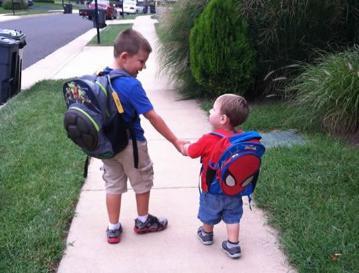eLearning
CONNECT Module 2: Transition (external website)
This free module was developed by CONNECT: The Center to Mobilize Early Childhood Knowledge and is part of a module series. In this module, you will learn about practices to help support children and families as they transition among programs in the early care and education system. This module is also available in Spanish.
Building the Legacy for Our Youngest Children with Disabilities: A Training Curriculum on Part C of IDEA 2004
National Dissemination Center for Children with Disabilities
Module 8 and its companion, Module 9, together take a detailed look at what the Part C regulations require in terms of the transition planning and activities that must occur. These modules are part of a training curriculum that covers the early intervention process. Each module includes a slide show, trainer’s guide, handouts and activity sheets for participants. Visit the site to see the full list of modules.
Module 2: Transition (external website)
Early Childhood Recommended Practices Modules
This module will help EI practitioners support the transitions of children with disabilities and their families between and among services, supports, and programs. Completion of this module will enable learners to: 1) explain program transition practices that can support a child’s successful adjustment and positive outcomes; and 2) use a variety of planned and timely strategies to support children’s successful adjustment and positive outcomes for both the child and family.
Webinars
Transition Tutorials
Infant & Toddler Connection of Virginia
These PowerPoint slide decks were originally used to record a series of four transition tutorial videos. Because the video files are no longer available, the slides with the script for each tutorial are available below.
Effective Strategies for the Transition Process
VA’s Integrated Training Collaborative | Partnership for People with Disabilities
Presented by Caroline Gooden
This webinar describes elements of a smooth transition process and how to develop an action plan. Click the link above to visit the 2012 Talks on Tuesdays Archive and scroll down until you find the webinar.
Getting from Here to There: Navigating the Transition from Part C to Part B – Part II
VA’s Integrated Training Collaborative | Partnership for People with Disabilities
Presented by Kathy Beasley, Ph.D., Sarah Moore, M.Ed., and Donna Rimmell, M.Ed.
This archived webinar built on the information presented in Part I. Staff from local early intervention systems and local school divisions led a web discussion about effective transition planning, communication, and collaboration at the local level. The Part C and Part B teams discussed strategies for building and maintaining a good working relationship to ensure smooth and effective transitions. Click the link above to visit the 2016 Talks on Tuesdays Archive and scroll down until you find the webinar. Part I in this series is also available on this archive page.
Getting from Here to There: Navigating the Transition from Part C to Part B – Part I
VA’s Integrated Training Collaborative | Partnership for People with Disabilities
Presented by Phyllis Mondak, M.S., M.Ed., Sarah Moore, M.Ed., and Kyla Patterson, M.S.
In this archived webinar, state staff from the Department of Behavioral Health and Developmental Services (DBHDS) and the Department of Education jointly reviewed transition requirements from both the Part C and Part B perspectives. They highlighted areas where there are overlapping responsibilities and identified policy, procedures, and timelines that are regulated as well as those that offer local determination.
